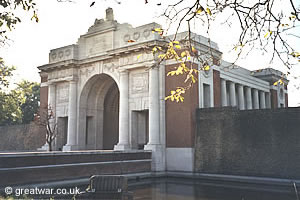The Menin Gate Inauguration Ceremony - Sunday 24 July, 1927
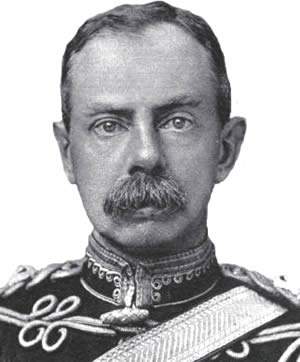
|
The Menin Gate Memorial to the Missing was inaugurated on Sunday 24 July, 1927 by Field Marshal Lord Plumer.
General Charles Harington, a colleague and close friend of Field Marshal Plumer, wrote about the occasion in his book entitled “'Plumer of Messines”. He described a long procession of relatives winding their way through the Grande Place (the Market Square, now called the Grote Markt in Flemish). They were making their way to the newly built Menin Gate Memorial to take their places on the eastern side of the Gate. Flagpoles on the rebuilt buildings around the famous square were hung with black flags.
Following on from the Town Hall the official dignitories included Albert, King of the Belgians, Field Marshal Lord Plumer and General Foch of France. Hundreds of local inhabitants, veterans of 1914-1918 and relatives of the fallen British and Commonwealth troops were gathered in the Grand Place and along the route to the Menin Gate.
On the roadway which crosses the moat at the eastern entrance of the memorial there was seating facing the memorial for about 160 official guests and military representatives. On both sides of the seating area contingents from the Belgian and British Armies were on parade, together with British and Belgian military bands. A wooden platform for those giving the speeches was positioned just in front of the eastern arch of the memorial. Veterans of the Great War wearing civilian clothes and carrying wreaths were gathered on the pavement under the memorial's central arch.
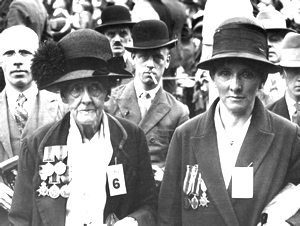
|
Crowds were standing on the ramparts either side of the memorial and along the road opposite the memorial on the eastern side of the moat. Several hundred veterans and relatives were crowded into the street leading to the memorial from the Menin Road. Individuals were in every open window of the newly built houses overlooking the memorial. Press photographers stood on walls or ladders to get a good vantage point. Loudspeakers were set up to enable everyone to hear the ceremony even in the Grande Place. Millions were also listening to the ceremony which was broadcast on the wireless in Britain.
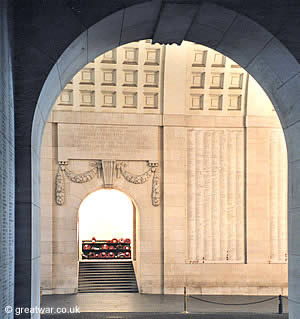
|
Recalling the speech given by Lord Plumer as he officially unveiled the memorial, General Harington commented in his book “Plumer of Messines” about Plumer's natural ability for public speaking. Harington considered that Plumer's speech at the Menin Gate was perhaps his greatest effort and that it must have been a supreme moment in his life. Plumer was standing on the spot where countless British soldiers had passed through the gateway from Ypres on their last march to the front line. Both Plumer and Harington had witnessed the town of Ypres being smashed to pieces. Harington wrote:
“I am sure he was thinking, as we were, of all those Brigade and Battalion Headquarters which he used to visit living in burrows under those ramparts, of the casualties incurred nightly by the endless stream of transport men, their horses and mules - on their nightmare journeys through that Menin Gate, the star shells, the crackling rifle fire, shell bursts, plunging horses and dogged Infantrymen. Each gateway a bottle-neck, registered to an inch by the enemy guns. Every man and animal had to run the gauntlet both going in and coming out. The Cloth Hall of world fame. The Cathedral. The Convent. The old Water Tower leaning over like Pisa, and every other building all in ruins, the old swans still swimming in the moat...”
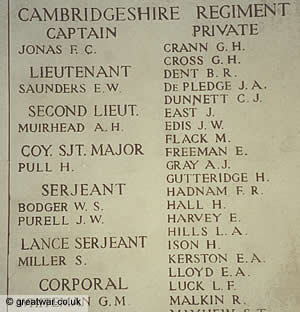
|
According to Harington the most moving part of Lord Plumer's speech was his attempt to give some comfort to the parents and relatives at the ceremony of the missing soldiers of the Ypres battlefields. Facing the Ypres Salient his words were:
“... One of the most tragic features of the Great War was the number of casualties reported as 'Missing, believed killed'. To their relatives there must have been added to their grief a tinge of bitterness and a feeling that everything possible had not been done to recover their loved ones' bodies and give them reverent burial. That feeling no longer exists; it ceased to exist when the conditions under which the fighting was being carried out were realized.
But when peace came and the last ray of hope had been extinguished the void seemed deeper and the outlook more forlorn for those who had no grave to visit, no place where they could lay tokens of loving remembrance. ... It was resolved that here at Ypres, where so many of the 'Missing' are known to have fallen, there should be erected a memorial worthy of them which should give expression to the nation's gratitude for their sacrifice and its sympathy with those who mourned them. A memorial has been erected which, in its simple grandeur, fulfils this object, and now it can be said of each one in whose honour we are assembled here today: ‘He is not missing; he is here’.”
At the end of the service buglers of the Somerset Light Infantry sounded the “Last Post” and pipers of the Scots Guards, standing on the ramparts, played a lament.
Related Topics
Menin Gate Memorial to the Missing
The Memorial to commemorate the names of over 54,000 officers and men of the United Kingdom and Commonwealth Forces who died in the Ypres Salient before 16th August 1917 and who have no known grave.
Menin Gate Memorial to the MissingDaily Last Post at the Menin Gate Memorial
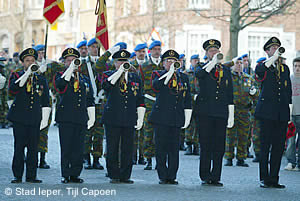
|
Every evening at 8 o'clock (20.00 hours) Last Post is played at the Menin Gate Memorial. This was started in 1927 and it has been played almost every night since except for a period in the Second World War when Ypres was occupied by German Forces.
To hear a live recording of the Last Post and Réveille played at the Menin Gate go to:
The Last Post CeremonyHistory of the Menin Gate
For information about the Menin Gate before and during the war:
History of the Menin GateAcknowledgements
Plumer of Messines, by General Sir Charles Harington, GCB, GBE
GWPDA Photograph of Field Marshal Lord Plumer courtesy of Great War Primary Document Archive: Photos of the Great War
(1) Photograph courtesy of the Ieper Tourist Office, copyright Stad Ieper: Tijl Capoen.
